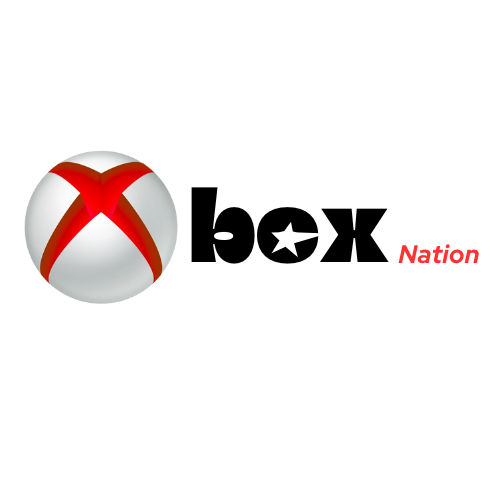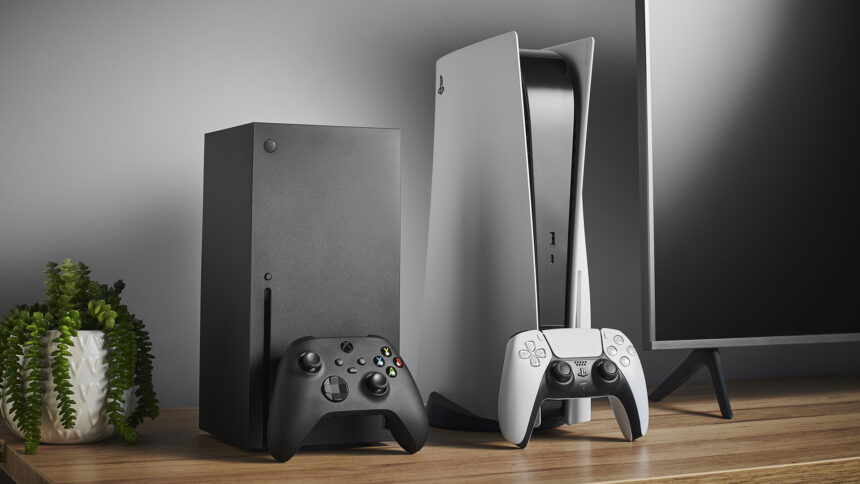The digital coliseum of high-stakes gaming is perpetually in motion, and in 2025, the titans of console technology, the Xbox Series X and the PlayStation 5 Pro (PS5 Pro), stand as monuments to unparalleled engineering. For enthusiasts, developers, and those seeking the absolute pinnacle of interactive entertainment, the choice between these two behemoths is a crucial one. This in-depth analysis transcends simple fan allegiance to deliver a comprehensive, data-driven comparison of the core architectural components and features that define the ultimate next-generation experience.
Trending in Gaming Technology: The current year, 2025, sees the dominance of several key performance metrics and consumer demands: AI upscaling technologies for achieving high resolutions with minimal performance cost, hyper-realistic ray tracing integration, and the consistent delivery of high frame rates (HFR) at 4K resolution. These factors form the essential foundation upon which both the Xbox Series X and the new PS5 Pro are judged.
The Core Battle: CPU and GPU Architecture
At the heart of any modern console lies the Central Processing Unit (CPU) and Graphics Processing Unit (GPU), the engines responsible for processing complex game logic and rendering stunning visuals. While both consoles leverage custom silicon from AMD, their implementation, clock speeds, and TFLOPs (Tera Floating-Point Operations Per Second) output reveal distinct philosophies in design.
Central Processing Unit (CPU)
Both machines utilize a custom AMD Zen 2 processor architecture, a significant leap over the previous console generation.
- Xbox Series X: Features an 8-core CPU running at a clock speed of 3.8 GHz (3.6 GHz with Simultaneous Multi-Threading or SMT). This higher, fixed clock speed provides a consistent floor for developers to optimize game logic, physics, and AI.
- PlayStation 5 Pro: The PS5 Pro maintains the same foundational 8-core Zen 2 architecture but introduces a ‘High CPU Frequency Mode,’ boosting the speed to 3.85 GHz (a 10% increase over the standard PS5’s 3.5 GHz). While a minor edge in peak performance, Sony’s approach often emphasizes highly optimized data flow alongside raw clock speed.
Analysis: The difference in CPU clocks is marginal. The real-world impact often depends heavily on how a specific game engine is coded. The Xbox Series X’s consistent, high-frequency approach offers reliable performance, whereas the PS5 Pro’s subtle clock increase is optimized to work in concert with its highly specialized memory and storage architecture.
Graphics Processing Unit (GPU) and TFLOPs
The GPU is the primary metric for raw graphical muscle, measured most commonly in TFLOPs. Here, the generational divide between the two consoles becomes clearer, especially with the PS5 Pro’s late-generation power boost.
| Feature | Xbox Series X | PlayStation 5 Pro (Estimated/Confirmed Specs) |
| GPU Architecture | Custom AMD RDNA 2 | Custom AMD RDNA 3 / Enhanced RDNA 2 |
| Compute Units (CUs) | 52 CUs | $\approx 60$ CUs |
| Clock Speed | $1.825\text{ GHz}$ (Fixed) | Up to $2.35\text{ GHz}$ (Variable) |
| Theoretical Peak TFLOPs (FP32) | $\approx 12.15\text{ TFLOPS}$ | $\approx 18.05\text{ TFLOPS}$ to $33.5\text{ TFLOPS}$ (Variable, highly dependent on upscaling/accelerator use) |
| Ray Tracing | Hardware-accelerated (RDNA 2) | Enhanced Hardware-accelerated (RDNA 3-like improvements) |
PS5 Pro’s Performance Leap: The PS5 Pro represents a significant mid-generation upgrade. Leaks and developer documentation indicate a GPU capable of up to 33.5 TFLOPs in specific scenarios, particularly when utilizing its custom AI upscaling and acceleration features. Its conventional TFLOPs rating sits around 18.05 TFLOPs, a massive jump from the standard PS5’s 10.28 TFLOPs.
Xbox Series X’s Power: The Xbox Series X, with its 12.15 TFLOPs and 52 CUs, remains a powerhouse, excelling in native 4K rendering and consistent performance. Microsoft’s focus on a stable, high-throughput architecture ensures that titles optimized for the Series X can deliver stunning fidelity and stable frame rates.
Analysis: On paper, the PS5 Pro holds the clear advantage in peak raw graphical capability, a difference that is not just substantial but generational. However, its ability to consistently hit its highest potential depends on developers fully integrating the console’s advanced features, particularly Sony’s new PlayStation Spectral Super Resolution (PSSR), an AI-driven upscaling technology. The Xbox Series X is a known quantity: solid, consistent, and capable of delivering true 4K without relying heavily on reconstruction techniques.
Memory and Storage: The New Performance Frontier
The speed and bandwidth of memory and storage are arguably more crucial to the feel of next-generation gaming than TFLOPs alone. Both consoles revolutionized load times, but their approaches to memory allocation and SSD speed differ.
System Memory (RAM)
Both consoles feature a unified pool of 16 GB GDDR6 memory, which is shared between the CPU and GPU.
- Xbox Series X: Memory is split into two pools with different bandwidths: 10 GB at $560\text{ GB/s}$ (high bandwidth) for the GPU and other intensive tasks, and 6 GB at $336\text{ GB/s}$ (standard bandwidth) for the OS and less demanding game data. This tiered approach is cost-effective and provides the GPU with maximum priority access.
- PlayStation 5 Pro: The PS5 Pro is rumored to boast a higher memory bandwidth than the original PS5’s $448\text{ GB/s}$, likely in the realm of $576\text{ GB/s}$, with an additional 2 GB of DDR5 RAM specifically for system use. This increases the total available game memory for developers, a vital factor for high-resolution texture streaming and complex world rendering.
Analysis: The PS5 Pro’s increased bandwidth and expanded game memory allocation suggest a greater capacity to handle the demands of its higher-TFLOP GPU, especially when rendering dense, complex scenes required for native 4K/120 FPS or high-fidelity ray tracing.
Ultra-High-Speed Solid State Drive (SSD)
The most transformative upgrade of this console generation is the custom-built SSDs, eliminating the bottlenecks of traditional hard drives.
| Feature | Xbox Series X | PlayStation 5 Pro |
| Internal Storage | $1\text{ TB}$ or $2\text{ TB}$ Custom NVMe SSD | $2\text{ TB}$ Custom NVMe SSD |
| Raw I/O Throughput | $2.4\text{ GB/s}$ | $5.5\text{ GB/s}$ (Standard PS5), likely higher for Pro |
| Compressed I/O Throughput | $4.8\text{ GB/s}$ (using dedicated hardware decompression) | $8-9\text{ GB/s}$ (Enhanced custom decompression) |
| Expandable Storage | Proprietary $1\text{ TB}$ or $2\text{ TB}$ Expansion Card (Seagate/WD) | Standard M.2 NVMe SSD Slot (User-installable) |
Analysis: The PS5 Pro’s storage architecture, carried over and likely enhanced from the standard PS5, maintains a massive lead in raw read speed. This speed isn’t merely about fast loading screens; it allows developers to stream in high-resolution game assets on the fly, enabling the design of massive, seamless worlds with virtually no loading breaks (a feature famously utilized in titles like Ratchet & Clank: Rift Apart). The Xbox Series X’s Quick Resume feature, allowing users to instantaneously jump between multiple games, offers a superior multitasking experience, even with a technically slower I/O throughput. The Xbox’s reliance on proprietary expansion cards is a point of contention due to their higher price point, whereas the PS5 Pro maintains the user-friendly M.2 slot for third-party expansion, a consumer favorite for value and flexibility.
Next-Gen Feature Set and User Experience
Beyond the raw numbers, the holistic gaming experience is shaped by innovative features and the ecosystem supporting the hardware.
Display Capabilities and Resolution
Both consoles target the highest echelons of visual fidelity, supporting HDMI 2.1 for features like Variable Refresh Rate (VRR) and Auto Low Latency Mode (ALLM).
- Xbox Series X: Capable of True 4K at up to 120 FPS and 8K HDR output (though native 8K gaming remains largely theoretical in 2025). Microsoft’s implementation of AMD FreeSync support further enhances the smoothness of gameplay on compatible monitors.
- PS5 Pro: The Pro model’s primary visual differentiator is its AI-driven upscaling technology, PSSR. This tech aims to deliver “Fidelity-like graphics at Performance frame rates,” meaning it targets upscaled 4K at 60 FPS or upscaled 8K resolution, providing a clearer image than traditional upscaling. For high frame rate enthusiasts, it is fully capable of 4K at 120 FPS.
Trending Feature – PSSR (PS5 Pro): PSSR is the PS5 Pro’s flagship feature and is a major trending keyword in console tech. This advanced anti-aliasing and upscaling method, similar to DLSS or FSR, could allow PS5 Pro to render titles at a lower internal resolution but upscale them to a stunning 4K or 8K, leveraging its increased TFLOPs for better ray tracing without sacrificing framerate.
Controller and Haptic Immersion
The controller is the primary interface, and both platforms offer unique innovations.
- Xbox Wireless Controller: Known for its familiar, ergonomic design and seamless cross-compatibility with PC. Its strength lies in its proven comfort, durability, and a highly responsive input latency system.
- DualSense Controller (PS5 Pro): This is a standout feature of the PlayStation ecosystem. The haptic feedback and adaptive triggers offer truly innovative, game-changing immersion. Haptics simulate sensations like rain or the grip of a weapon, while adaptive triggers can dynamically adjust resistance, simulating the tension of a bowstring or the weight of a car’s accelerator.
Analysis: For pure mechanical control, the Xbox controller is excellent. For a next-level, immersive physical connection to the game world, the DualSense is revolutionary and remains a significant factor for those prioritizing unique sensory feedback.
Gaming Ecosystem and Value Proposition
The hardware is the foundation, but the ecosystem determines how and what you play. This is where the two competitors diverge dramatically.
- Xbox Series X: The Game Pass Advantage. The Xbox ecosystem is anchored by Xbox Game Pass Ultimate, the industry-leading subscription service providing access to hundreds of games, including all first-party Xbox exclusives on day one. Microsoft’s strategy focuses on accessibility and backward compatibility, supporting four generations of games (Original Xbox, Xbox 360, Xbox One, and Series X/S), many with enhanced visuals via features like Auto HDR and FPS Boost. This commitment to an expansive library and the cloud gaming capabilities of Game Pass (via Xbox Cloud Gaming) represents an unmatched value proposition for the modern gamer.
- PS5 Pro: The Exclusive Content King. PlayStation’s long-standing strength lies in its unmatched library of high-quality, cinematic console exclusive titles (e.g., Marvel’s Spider-Man 2, God of War: Ragnarok, Horizon Forbidden West). While the PS5 Pro fully supports PlayStation VR2 (PS VR2), offering a premium virtual reality gaming experience that the Xbox Series X currently lacks, its service model (PlayStation Plus) does not offer the same day-one access to new AAA exclusives as Game Pass.
Live Daily Information: As of today, October 25, 2025, the Xbox Series X is seeing a surge in discussions surrounding its $499 (Standard) and $599 (2TB Galaxy Black Edition) price points, contrasting sharply with the PS5 Pro’s premium tag. The PS5 Pro, having launched in late 2024, is still commanding its $699.99 price for the Digital-only model, making the Xbox Series X a more budget-friendly option for 4K gaming. Furthermore, Microsoft’s planned acquisitions continue to fuel the cloud gaming trend and bolster the Game Pass library, a major driver of engagement across the gaming community.
The Definitive Hardware Verdict
Choosing the “winner” is less about crowning a single champion and more about aligning the hardware with individual gaming priorities. Both are engineering marvels for the year 2025.
The Case for the PlayStation 5 Pro:
- Absolute Graphical Fidelity: The clear winner in raw peak GPU power and the integration of next-gen features like PSSR. The PS5 Pro is the console for the visual enthusiast who demands the highest possible resolution and ray tracing performance without significant frame rate compromise.
- Immersive Experience: The DualSense controller and robust PS VR2 support create a deep, multisensory immersion layer unmatched by the competition.
- Must-Play Exclusives: It is the only platform for iconic, critically acclaimed cinematic narratives.
The Case for the Xbox Series X:
- Consistent Power and Value: Offers exceptional, stable performance at a more accessible price point. The Series X is an outstanding choice for True 4K gaming.
- Unbeatable Ecosystem: Xbox Game Pass provides unparalleled access to hundreds of titles, including all first-party releases, delivering the best value in subscription gaming.
- Backward Compatibility and Versatility: Its commitment to four generations of games and the instant switching of Quick Resume make it the most versatile console for gamers with an extensive library.
Final Recommendation: For the hardware purist and those prioritizing the most advanced graphical rendering techniques (like PSSR upscaling) and immersive VR, the PS5 Pro justifies its premium price. For the gamer who values a massive, affordable library, backward compatibility, a smooth multitasking experience, and consistent high-end performance, the Xbox Series X remains the smarter, more practical, and overall best value choice in the next-gen console war. The choice ultimately depends on whether you value the absolute top-tier graphics of the PS5 Pro or the unparalleled library access and practical features of the Xbox Series X ecosystem.







